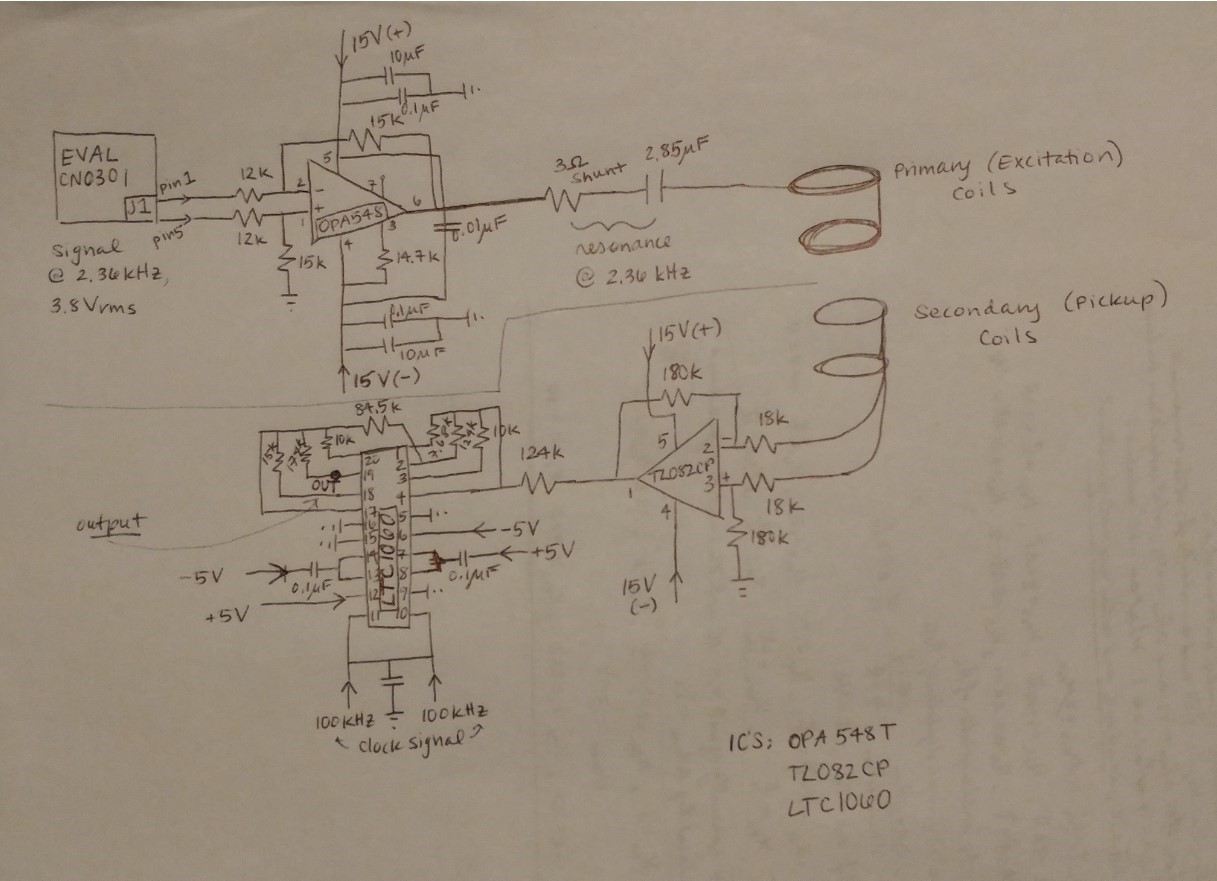Hello,
I have constructed an LVDT that is not behaving as it theoretically should. I have eliminated so many possibilities for its malfunction that I thought I would post on here to see if anyone would help. I have been running COMSOL simulations with altered coil numbers and geometrical asymmetries to see if I could reproduce the behavior with no success.
I've wound a 3D printed form with excitation (primary) coils (30 turns) and pick up (secondary) coils (2 unconnected sets of 30 turns which add to 60 turns). It's a large LVDT, the radius is .10008 m and the length is .09906 m. I have 1.035 A running through it
Here is what is happening: I have a 1 inch steel ball that I use as the core, as I move it from the right hand secondary coil to the left side coil, there is a huge response at the right hand secondary coil, then once the ball passes the null position the response doesn't change much except show a phase shift, the signal actually decreases a bit at the left coil. The amplitude response seems to be concentrated on the right coil and the phase response concentrated on the left.
Can anyone explain this strange behavior? I'm a graduate student at NASA Langley and my advisor can't explain what's happening, nor can the electronics expert.
Any help or assistance would be very appreciated.
Thank you,
Michelle


